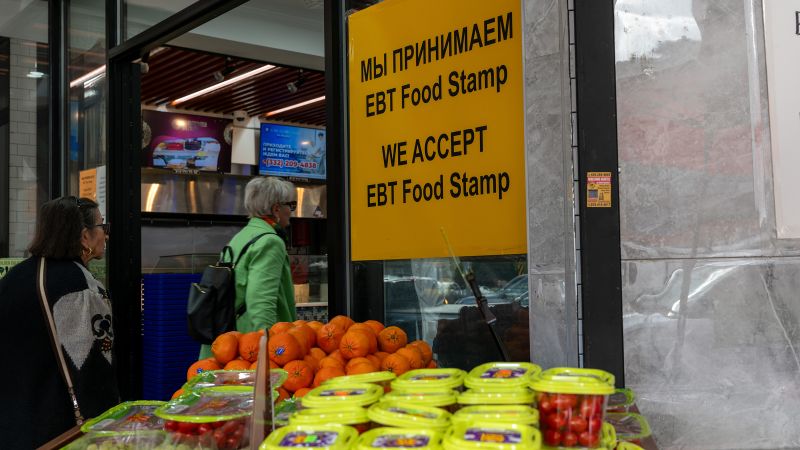The recent analysis by the Congressional Budget Office brings unsettling news regarding food assistance in America. The report highlights that approximately 2.4 million fewer individuals, specifically families with children, are expected to rely on food stamps in an average month. This change comes in the wake of expanded work requirements enforced by Republican lawmakers under the administration of President Donald Trump. This pivotal aspect of the legislation is set against a backdrop where grocery prices remain elevated, intensifying the financial strain on lower-income families who seek assistance from food banks.
The new law introduces a work mandate that now includes parents of dependent children, marking a shift in the landscape of food stamp benefits known formally as the Supplemental Nutrition Assistance Program (SNAP). Adults with children aged 14 or older must now fulfill work requirements to qualify for these benefits. While the final version of the legislation has been modified from earlier drafts— which proposed a requirement for parents of children aged seven and older— the impact on food assistance remains significant, with the Congressional Budget Office indicating that enrollment will drop far less than initially projected by earlier proposals. Although fewer will lose assistance compared to previous versions of the law, the consequences still threaten the welfare of millions of Americans.
The findings did not just fixate on the sheer numbers but unearthed critical insights into how these requirements would ultimately affect various demographics. According to CBO analysis, looking into the implications of the law until the fiscal year 2034 reveals an alarming reality where lower-income households will likely see their incomes diminish, while higher-income families, in stark contrast, will experience substantial financial benefits from tax cuts included in the legislation. This disparity raises concerns among Democrats, who plan to utilize these findings to rally against Republicans who they argue have passed a bill that disproportionately favors the wealthy and undermines aid for lower-income families.
Moreover, the legislation also imposes additional requirements that extend to certain vulnerable populations. Adults aged 55 to 64, homeless individuals, veterans, and former foster care youth will now also face stringent work mandates to qualify for aid. Notably, these mandates come without exceptions for Native Americans, raising questions about equity in assistance. These changes aim to move an estimated 300,000 adults with children aged 14 and older away from the food stamp program, while other provisions suggest the possibility of increased benefits for some but decreased for others, primarily children involved with various nutrition programs.
A concerning aspect of the law indicates that certain states will need to contribute to the cost of food stamp benefits starting in fiscal year 2028 if their payment error rates exceed 6%. This requirement could lead to some states renegotiating their commitment to the program, possibly resulting in further cuts to benefits or eligibility criteria, adversely affecting nearly 300,000 people monthly.
As a significant shift occurs within the framework of SNAP, it is essential to consider how these changes will elevate stress for families already struggling to cope with economic challenges. Critics of the law have expressed that the increased bureaucracy and work-related stress may inadvertently push employed individuals out of the assistance program, as highlighted by Gina Plata-Nino from the Food Research & Action Center. The ramifications of these policy changes do not merely end with food assistance; a new work mandate for Medicaid enrollees is projected to leave an additional 5.3 million Americans uninsured by 2034, ultimately contributing to a staggering total of 10 million people without health insurance in the near future.
The broad fiscal implications show that although the overall package may yield some positive gains in income for Americans, the most vulnerable groups will undoubtedly suffer from substantial cuts to safety net programs. Households at the lowest income bracket, earning an average of under $24,000 annually, are anticipated to see their incomes drop by about $1,200 a year through 2034, while the highest earners will experience dramatic increases in income, thus exacerbating the income disparity that plagues the nation. In conclusion, while some Americans may witness modest increases in income under the new law, the benefits are heavily skewed in favor of the wealthiest, leaving the lower and middle-income households to bear the brunt of cuts to essential social safety net programs.











